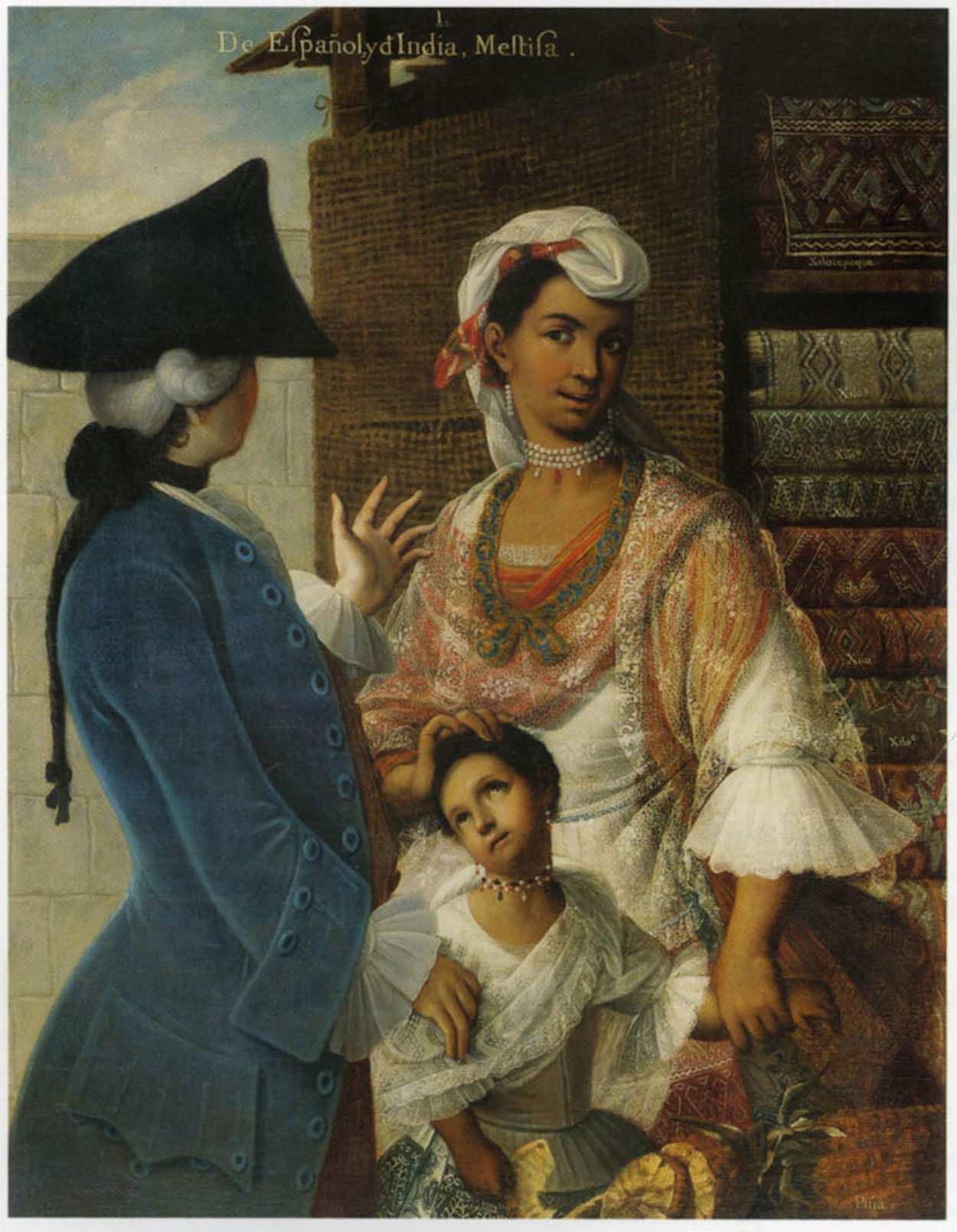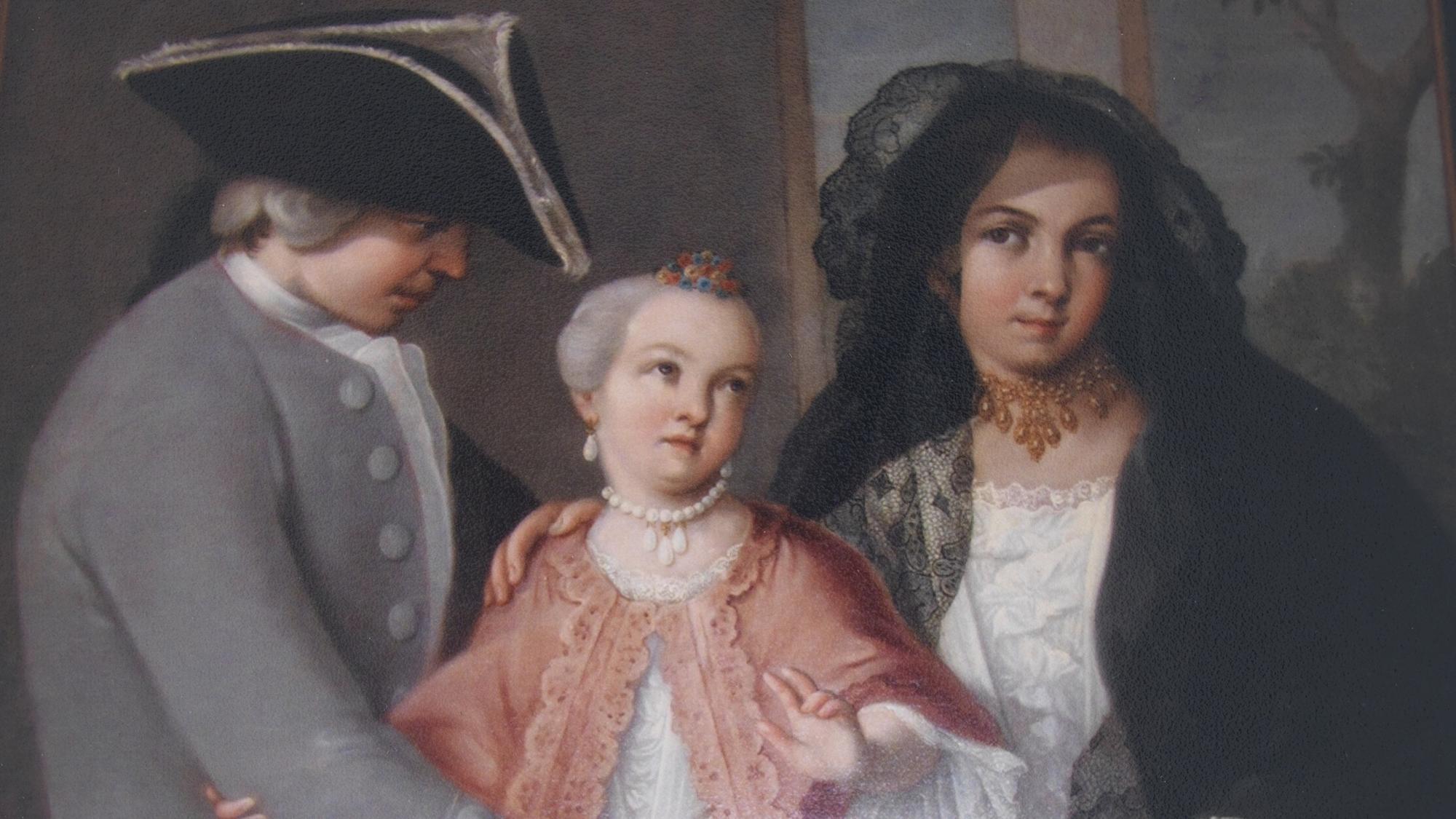This painting is pretty, but its story isn’t so nice. Like most other New World colonies, Spanish Mexico was a pretty racist place. A casta (caste) system separated the inhabitants, with derogatory names given to children of interracial marriages between the Spaniards, native Mexicans, Africans, and multiracial people living there.
This painting is one of sixteen casta paintings by Mexican artist Miguel Cabrera. Each depicts a different mixed couple and child; their castas are clearly indicated at the top of each painting. Besides their skin tone and facial features, details such as the subjects’ clothing, setting, and occupation provide clues about the social status of each caste. This particular painting depicts a Spanish father, Mexican (Indian) mother, and their mestiza daughter. The father is dressed in Spanish men’s fashion of the time, while the mother and daughter wear more exotic-looking clothing, and they stand in front of the market stall where they sell cloth.
The genre of Casta paintings—made by many other artists as well—perpetrated unkind stereotypes that didn’t necessarily reflect reality. Cabrera’s paintings seem to have been a bit more sympathetic than most, for a good reason. Cabrera claimed vehemently to be a fully Spanish, but historians believe he was probably actually mestizo, just like the little girl in this painting.
- Alexandra Kiely


 Miguel Mateo Maldonado y Cabrera
Miguel Mateo Maldonado y Cabrera